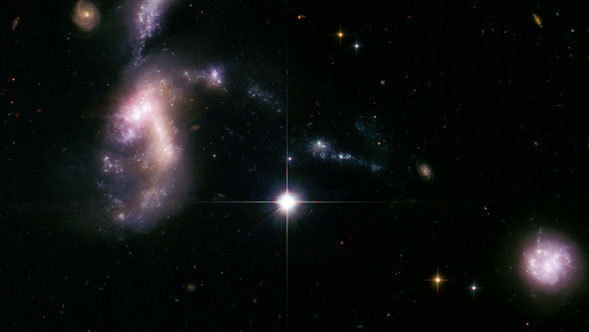
News Release • February 18th, 2010 • feature10-02 •
Imagine finding a living dinosaur in your backyard. Astronomers have found the astronomical equivalent of prehistoric life in our intergalactic backyard: a group of small, ancient galaxies that has waited 10 billion years to come together. These "late bloomers" are on their way to building a large elliptical galaxy.
Such encounters between dwarf galaxies are normally seen billions of light-years away and therefore occurred billions of years ago. But these galaxies, members of Hickson Compact Group 31, are relatively nearby, only 166 million light-years away.
New images of this foursome by NASA's Hubble Space Telescope offer a window into the formative years of the universe, when the buildup of large galaxies from smaller building blocks was common. The analysis was bolstered by infrared data from NASA's Spitzer Space Telescope and ultraviolet observations from NASA's Galaxy Evolution Explorer and Swift satellite. Those data helped the astronomers measure the total amount of star formation in the system.
Original Story and Imagery: http://jpl.nasa.gov/news/features.cfm?feature=2442



